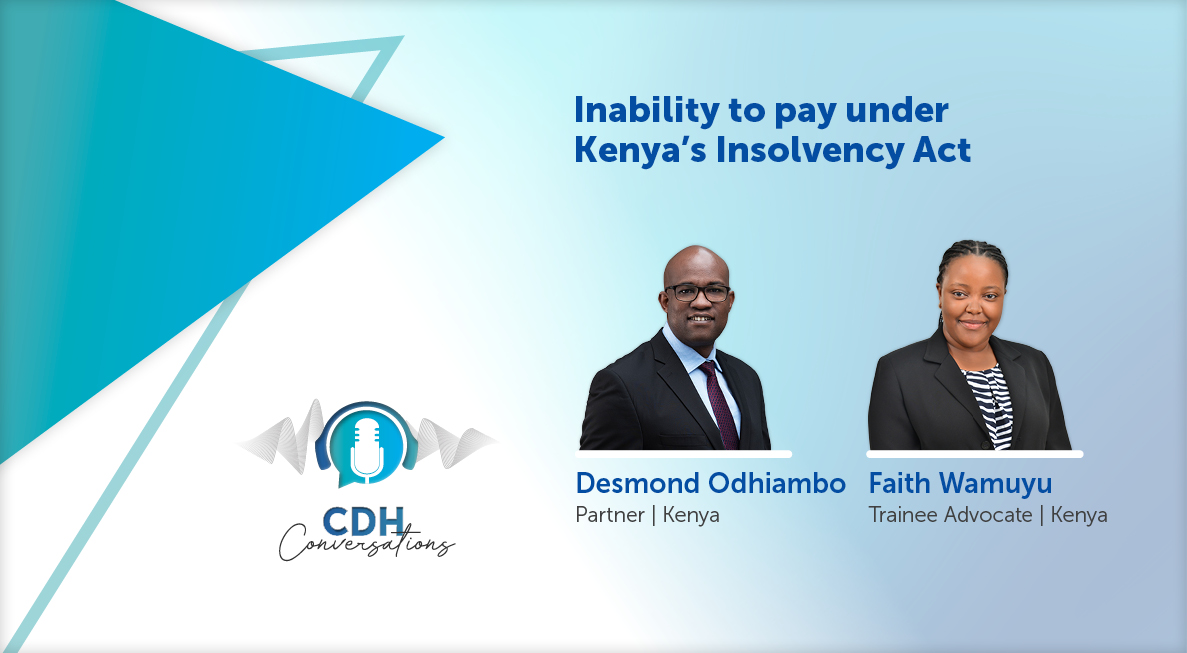So close, yet so far: The effect of liquidation on judicially attached property
At a glance
- When a creditor obtains a default judgment, a writ of execution, and attaches the debtor's movable assets, the process can be disrupted if another creditor brings a liquidation application against the debtor, resulting in a provisional liquidation order.
- Once a liquidation order is granted, any attachment or execution of assets becomes void, and the attached property automatically becomes part of the insolvent estate.
- The judgment creditor who has not completed the sale in execution or received the proceeds will have a weak position, as they will not enjoy any preference in the proceeds of the insolvent estate, and the attached property will be administered in accordance with the Insolvency Act.
In such an instance these questions arise: Does the judicially attached property automatically form part of the insolvent estate? If so, what type of claim will the judgment creditor have against the insolvent estate? And, in the end, where does all of this leave the creditor who has spent money on legal fees to obtain a judgment and judicially attach the movable assets?
Does the attached property form part of the insolvent estate?
Section 359(1) of the Companies Act 61 of 1973 (1973 Companies Act) provides that where the court has made an order winding-up a company, all civil proceedings by or against the company concerned are suspended until the appointment of a liquidator, and any attachment or execution put in force after the commencement of the winding-up shall be void. A liquidation order is made retrospectively, therefore, the liquidation order will be valid from the date upon which the application for liquidation was made. Thus, any attachment or execution put in force after the date on which the application for liquidation was made will be rendered void.
Section 359(2) of the 1973 Companies Act provides that every person who instituted legal proceedings against a company which was suspended by the winding-up order, and every person who intends to institute legal proceedings may, within four weeks after the appointment of a liquidator, give the liquidator not less than three weeks’ notice in writing that they want to continue or commence the proceedings.
In an instance where movable assets have been attached by the sheriff (whether they have been removed from the debtor’s premises or not), the process is also suspended unless the creditor gives the liquidator notice and the liquidator gives their consent. Section 5(2) of the Insolvency Act 24 of 1936 (Insolvency Act) provides that the estate of an insolvent includes property or the proceeds thereof which are in the hands of a sheriff under a writ of attachment.
The court in Ex Parte Spartan SME Finance (Pty) Ltd: In re Insurance Underwriting Managers (Pty) Ltd v Zululand Bus Services and others [2022] JOL 57187 (GP) stated that it is trite that a judgment creditor acquires no rights to any property under attachments other than to the proceeds of any sale in execution. Similarly, the court in Simpson v Klein NO and Others [1987] (1) SA 405 (W) found that ownership only transfers from the debtor to the creditor once the property has been sold in execution proceedings. Thus, while the property is merely attached, it would still form part of the debtor’s insolvent estate.
If a creditor nonetheless elects to proceed with a sale of execution after the issuing of a provisional or final liquidation order, the proceeds of the sale must be paid over to the liquidator, and will be administered in terms of the Insolvency Act.
The claim of the judgment creditor to the insolvent estate
We have established that the judicially attached assets still form part of the insolvent estate. What then is the status of the court order and writ of execution if the creditor elects not to seek consent from the liquidator to proceed with the sale in execution? The creditor will have the option to submit a claim against the insolvent estate. There are different classes of creditors in an insolvent estate: secured, preferred and concurrent creditors. If the judgment creditor was a concurrent creditor, does the court order and writ of execution and the fact that they had judicially attached the insolvent’s estate elevate the class of the creditor to being at least a preferred creditor?
The court in Pols v R Pols-Bouers en Ingenieurs (Edms) Bpk [1953] (3) SA 107 (T) held that, “if the money is still under attachment, the creditor is not entitled to it, but is entitled only to a preference for his costs of execution. But if the money had passed to the creditor before winding up commenced, the liquidator has no claim to it.” It must be noted that preference as to costs does not appear to extend to costs of obtaining the court order and writ of execution but appears to only apply to the sale in execution costs.
Section 95(2) provides that the attachment of any property in execution of any judgment shall not have the effect of conferring upon the judgment creditor any preference other than the preference provided for in subsection 1, which is for costs of the execution.
Where does this leave the creditor?
In the end we see that a judgment creditor who has not completed the sale in execution, or who has not received the proceeds of the sale, prior to the issuing of a liquidation application is in a rather weak position once the debtor has been placed in liquidation. Not only will the attached property or the proceeds thereof form part of the insolvent estate, but the judgment creditor also does not enjoy any preference in the proceeds of the insolvent estate.
This is a rather unfortunate position for the creditor that has spent time and money in following the recovery process and subsequently obtaining a court order and writ of execution. This begs the question of whether the creditor would have been better off having applied for the liquidation of the debtor instead of following the normal court process, especially bearing in mind that the costs of the liquidation application will eventually be costs of the insolvent estate and may be recoverable by the creditor. Bearing this in mind, a big risk will be that creditors may start attempting to use liquidation proceedings as a debt collection mechanism, and we believe, this would negatively impact the integrity and purpose of the procedure. The lesson to be learned is to act as fast as possible if any of your debtors fall in arrears with their payment obligations towards you.
The information and material published on this website is provided for general purposes only and does not constitute legal advice. We make every effort to ensure that the content is updated regularly and to offer the most current and accurate information. Please consult one of our lawyers on any specific legal problem or matter. We accept no responsibility for any loss or damage, whether direct or consequential, which may arise from reliance on the information contained in these pages. Please refer to our full terms and conditions. Copyright © 2026 Cliffe Dekker Hofmeyr. All rights reserved. For permission to reproduce an article or publication, please contact us cliffedekkerhofmeyr@cdhlegal.com.
Subscribe
We support our clients’ strategic and operational needs by offering innovative, integrated and high quality thought leadership. To stay up to date on the latest legal developments that may potentially impact your business, subscribe to our alerts, seminar and webinar invitations.
Subscribe




